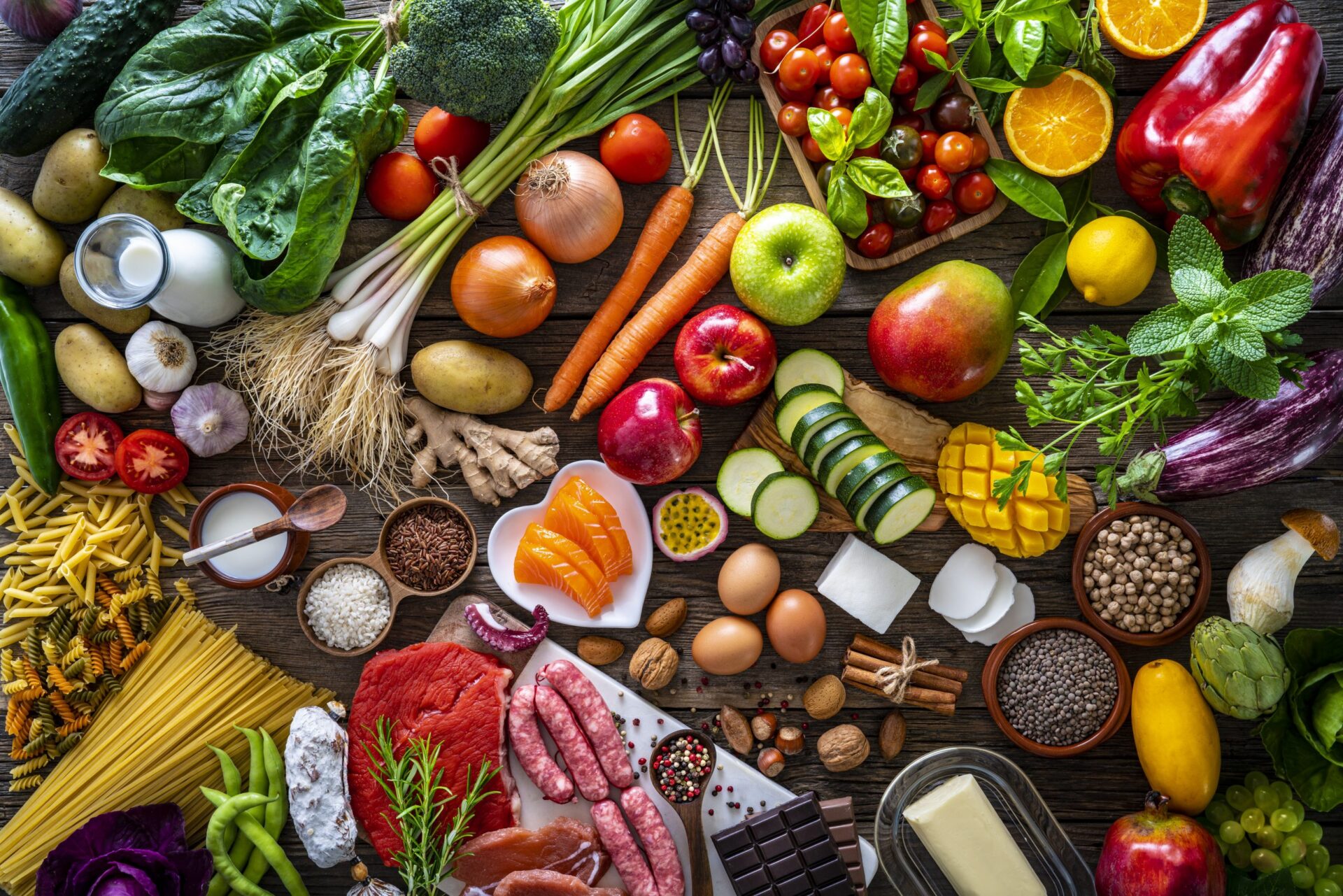- Find a DoctorDoctors by Specialty
- Cardiac Electrophysiology
- Cardiology
- Colon & Rectal Surgery
- Family Medicine
- Gastroenterology
- General & Vascular Surgery
- Gynecological Oncology
- Gynecology
- Infectious Disease
- Internal Medicine
- Interventional Cardiology
- Interventional Radiology
- Nephrology
- Neurology
- Neurosurgery
- Obstetrics & Gynecology
- Oncology
- Oncology & Hematology
- Orthopedic Surgery
- Otolaryngology
- Perinatology
- Psychiatry
- Pulmonary Medicine
- Radiation Oncology
- Rheumatology
- Sleep Medicine
- Thoracic Surgery
- Urology
- View All Doctors
- Our ServicesMedical Services
- Bariatric Services
- Behavioral & Mental Health
- Breast Care
- Cancer Care
- Critical Care
- Ear, Nose, & Throat
- Emergency Services
- Gastroenterology
- Glossary
- Heart Care
- Home Care
- Hospice & Palliative Care
- Imaging & Diagnostics
- Long-Term Care
- Nephrology
- Orthopedics
- Primary Care
- Rehabilitation Therapies
- Robotic-Assisted Surgery
- Sleep Services
- Spine Care
- Stroke Care
- Surgery Services
- Telehealth Services
- Urology
- Urgent Care
- Virtual Urgent Care
- Women’s Services
- Wound Care
- Our Locations
- Patients & Visitors
- About Us
Content created based on a presentation by Amanda Mondini, RD, LD
 “A growing body of research suggests that inflammation increases the risk of many chronic diseases, including some types of cancer. Learn the foods that may contribute to or help relieve inflammation.” Amanda Mondini, RD, LD, at Thompson Cancer Survival Center, gave this presentation to the Cancer Support Community of East Tennessee on February 15, 2022. Attendees responded to the information very positively and we want to make it available here. We will also include the delicious recipe she shared!
“A growing body of research suggests that inflammation increases the risk of many chronic diseases, including some types of cancer. Learn the foods that may contribute to or help relieve inflammation.” Amanda Mondini, RD, LD, at Thompson Cancer Survival Center, gave this presentation to the Cancer Support Community of East Tennessee on February 15, 2022. Attendees responded to the information very positively and we want to make it available here. We will also include the delicious recipe she shared!
What is Inflammation?
Inflammation is the immune system’s complex biological response to a foreign agent (bacteria, plant pollen, etc.). This response can create symptoms that are both observable with the naked eye, as well as reactions that we cannot see. We can visibly observe swelling, redness, heat, and can feel pain. On the other hand, infiltration of white blood cells caused by inflammation is an example of something that we cannot directly observe. All of these responses are designed to protect the body and rid it of the foreign agent or irritant.
Chronic Inflammation
When your immune system continues to respond in these ways, even though the foreign agent or irritant is no longer present, it is called chronic inflammation. Chronic inflammation has been linked to several serious conditions and diseases. Some of these include:
- Cancer
- Heart disease
- Type II diabetes
- Obesity
- Arthritis
- Depression
- Alzheimer’s

Causes of Inflammation
Certain foods or drinks we consume can evoke an inflammatory response by our body. Research evaluating these responses has been used to categorize certain foods as “anti-inflammatory” and other foods as “pro-inflammatory”. A food is placed into the “anti-inflammatory” or “pro-inflammatory” category based on its components. Specific nutrients and phytochemicals have been studied and deemed to either combat or contribute to inflammation.
Click the link to visit the Cancer Support Community of East Tennessee and sign up for future presentations by Thompson’s experts.
Measuring Inflammation
Inflammation can be measured by specific biomarkers. According to www.cancer.gov, biomarkers are “biological molecules found in blood, other body fluids, or tissues that are a sign of normal or abnormal process, or of a condition or disease”. In simpler terms, biomarkers are objective medical signs that can be detected and measured. The Dietary Inflammatory Index (DII) is a database that rates how biomarkers of inflammation react to food components.
“The Dietary Inflammatory Index (DII) is a single score pulling together evidence on how food-related components affect 6 different biomarkers of inflammation. DII scores encompass 45 individual nutrients and other components that have either pro- or anti-inflammatory potential.” Karen Collins and the American Institute for Cancer Research.
The six biomarkers measured by the DII are Interleukin-1ß, Interleukin-4, Interleukin-6, Interleukin-10, Tumor Necrosis Factor-α, and C-Reactive Protein.
Anti-Inflammatory Diet – Limit or Load-up
The scores of the DII can be used to generally classify foods as pro- or anti-inflammatory. In your diet, you would want to “limit” pro-inflammatory foods and “load-up” on anti-inflammatory foods. These guidelines will help you make informed diet choices. However, modulating your inflammatory state with diet is not a simple, direct, or one-time fix. It is the small, every day choices, and consistent behaviors that are key to pursuing overall health.
Foods contain certain nutrients and phytochemicals that make them good options to “load-up” on so we can help combat inflammation. Additionally, certain foods are good to include in recipes because they have anti-inflammatory properties.
|
Nutrients |
Phytochemicals |
Foods |
|
Folate (same as vitamin B9) |
Beta-carotene |
Garlic |
|
Vitamin C |
Polyphenols |
Ginger |
|
Magnesium |
|
Thyme |
|
Selenium |
|
Oregano |
Nutrients
Let’s take a closer look at these nutrients. The Recommended Daily Allowance (RDA) of these nutrients serves as a good guide on how much we need. The RDA is the average amount of the nutrient our healthy bodies need daily. The chart below shows the RDA for each nutrient as well as examples of foods that are good sources for each nutrient.
|
Folate (same as vitamin B9): RDA = 400 µg/day |
|
– beef liver, spinach, black-eyed peas, breakfast cereals, white rice, asparagus |
|
Vitamin C: RDA = 75 mg/day |
|
– sweet red pepper, orange, kiwi, broccoli, strawberries, brussels sprouts, grapefruit, broccoli |
|
Magnesium: RDA = 320 mg/day |
|
– pumpkin seeds, chia seeds, almonds, cashews, peanuts, soymilk, black beans, edamame, potato with skin |
|
Selenium: RDA = 55 µg/day |
|
– Brazil nuts, yellowfin tuna, halibut, shrimp, turkey, chicken, cottage cheese, eggs, whole wheat bread |
Phytochemicals:
Phytochemicals are compounds found within plants that keep them healthy and protect them from fungi, bacteria, or other plant diseases. These compounds also have benefits to us when we include them in our diet. You may have heard of the recommendation to “make your plate a rainbow with fruits and vegetables”. This is because vividly colorful foods typically have higher concentrations of phytochemicals. Beta-carotene and polyphenols are two phytochemicals of interest.
Beta-carotene is a pigment. The colors of fruits and vegetables that are the richest sources of beta-carotene are yellow, orange, and green leafy. The more intense the color of the fruit or vegetable, the more beta-carotene it contains.
Polyphenols contribute not only to the color of fruits and vegetables, but also impact the flavor and pharmacological activities. Polyphenols are antioxidants. Research has shown these compounds are also very beneficial in fighting inflammation. Sources of polyphenols with which you may be familiar include: olive oil, green/black tea, dark chocolate, cherries, and strawberries. Learn more about polyphenols in this quick, 1-minute video: Why are polyphenols beneficial?
More Load-up Foods:
Other foods that are great to “load-up” on are garlic, ginger, thyme, and oregano.
In addition to foods and nutrients that should be added to our diet for their anti-inflammatory properties, certain foods should be limited because of their pro-inflammatory properties.
Limit Intake
Nutrients that contribute to inflammation are saturated fat and trans fat. Foods that should be limited include:
Foods that should be limited include:
- Processed meat
- Red meat
- Refined grains
- High-calorie beverages
The Mediterranean Diet
Diets consistent with traditional Mediterranean-style eating are linked to blood tests showing lower levels of inflammatory markers. “The inflammation-fighting potential of these eating patterns seems to be associated with their rich use of fruits and vegetables and with extra-virgin olive oil, which is rich in polyphenol compounds.”
Informed Choices
Finding ways to support our wellness through our diet takes effort. Learning why we should limit or increase certain foods reinforces our positive decisions. Striving to improve and make small positive choices about what we include in our diet will bring many benefits.
Recipe
Embracing changes in diet can be difficult as we explore new ways to create meals that we enjoy. Here is a delicious recipe that can jump start your anti-inflammatory efforts!
[bs_well size=”md”]Follow this link for the recipe: SESAME GINGER TUNA LETTUCE CUPS
*By the way, it’s ready in 10 minutes with no cooking required![/bs_well]
Read the blogs: Building a Healthy Relationship with Food and Cancer and Weight Management to learn more about the impact of nutrition on cancer.
References:
American Institute for Cancer Research and Karen Collins. (2021, August 30). Can an Anti-Inflammatory Diet Reduce Cancer Risk? An anti-inflammatory diet holds strong potential to reduce cancer risk. https://www.cancerhealth.com/article/anti-inflammatory-diet-reduce-cancer-risk
Shivappa, N., Steck, S., Hurley, T., Hussey, J., & Hébert, J. (2014). Designing and developing a literature-derived, population-based dietary inflammatory index. Public Health Nutrition, 17(8), 1689-1696. doi:10.1017/S1368980013002115
Yahfoufi N, Alsadi N, Jambi M, Matar C. The Immunomodulatory and Anti-Inflammatory Role of Polyphenols. Nutrients. 2018 Nov 2;10(11):1618. doi: 10.3390/nu10111618. PMID: 30400131; PMCID: PMC6266803
Pérez-Jiménez, J., Neveu, V., Vos, F. et al. Identification of the 100 richest dietary sources of polyphenols: an application of the Phenol-Explorer database. Eur J Clin Nutr 64, S112–S120 (2010).
https://doi.org/10.1038/ejcn.2010.221
https://www.health.harvard.edu/staying-healthy/foods-that-fight-inflammation
https://www.cancer.gov/publications/dictionaries/cancer-terms/def/biomarker
https://www.aicr.org/resources/blog/can-an-anti-inflammatory-diet-reduce-cancer-
risk/#:~:text=For%20example%2C%20processed%20meat%2C%20red,identified%20as%20anti%2Dinflammatory%20choices
https://ods.od.nih.gov/HealthInformation/Dietary_Reference_Intakes.aspx
https://ods.od.nih.gov/factsheets/
https://marisamoore.com/sesame-ginger-tuna-lettuce-cups/
























